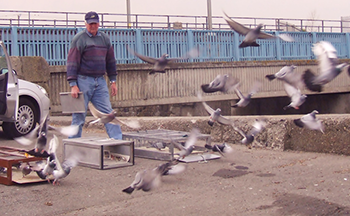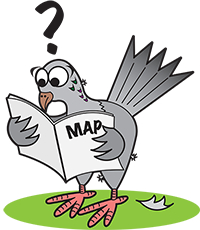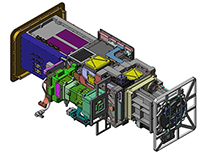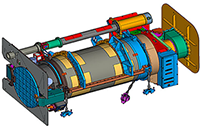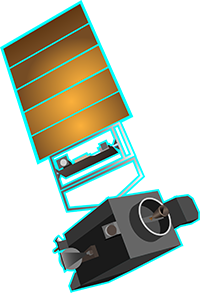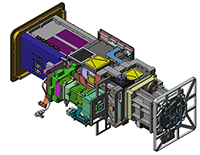Bad (space) weather cancels pigeon races!
An ancient sport
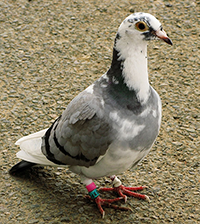
Pigeon racing is a big sport that dates back almost 2,000 years. All over the world, there are people with the hobby of training and racing a special kind of homing pigeon. They take their caged pigeons to a spot that is a carefully measured distance from their home. Then they open the cages and time how long it takes for the pigeons to fly home. The pigeon with the shortest time gets the prize—or rather its owner gets the prize. The pigeon just gets tired, since it has flown as fast as it could for 60 – 600 miles or more (100 to 1000 kilometers)!
But how do the pigeons know where home is?
It has taken a lot of scientific study to figure it out, and there are still questions. One thing that seems certain is that the pigeons can detect Earth’s magnetic field lines.
Earth is like a big magnet, with lines of magnetic force that loop around Earth from one magnetic pole to the other. A compass needle will line up along the magnetic lines of force. That’s how humans can know which way is north. The pigeons seem to have a compass too, but it is “built in,” so they always know in which direction they are flying. We know they are not navigating by the position of the Sun in the sky, because they fly straight home even at night or in cloudy conditions when they can’t see the Sun.
While the pigeons don't use the Sun for navigation, the Sun does affect their ability to navigate. When the Sun is in a stormy mood, it blasts charged particles into space at high speeds. If the blast of particles hits Earth, it shakes up Earth's protective magnetic field. When this happens, the magnetic field that the pigeons use for navigation will change direction and the pigeon's navigation system will get confused and send the pigeon the wrong way. The anxious owner may never see his expensive champion racing pigeon again.
This animation shows a solar storm hitting and distorting Earth's magnetic field.
For that reason, some pigeon racers call up the Space Weather Prediction Center (part of the National Weather Service) in Boulder, Colorado, before a big race. They want to know the “space weather” forecast. The scientists who work there keep an eye on the Sun using satellites such as the GOES (for Geostationary Operational Environmental Satellites). These satellites have special instruments that monitor the Sun’s x-rays and ultraviolet light output. They can detect the beginnings of a storm that might send bad space weather toward Earth.

Inside the Space Weather Prediction Center in Boulder, Colorado, scientists keep an eye on the Sun. The GOES satellites send images that show activity on the Sun's surface that means a flare or eruption may be about to happen.
If bad space weather is on the way, the pigeon race is postponed. No one wants to lose a prized pigeon!



